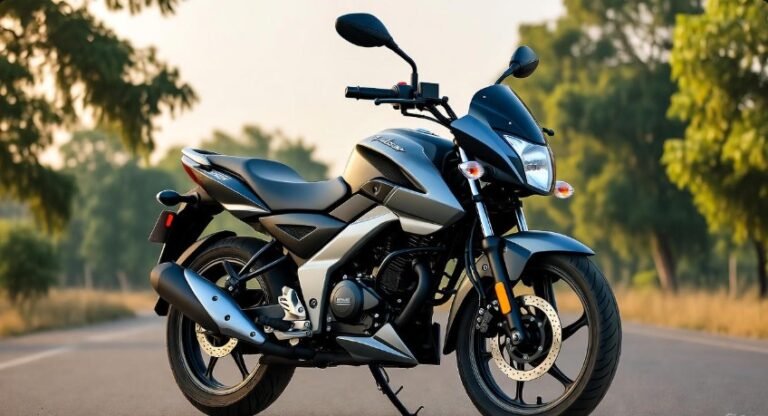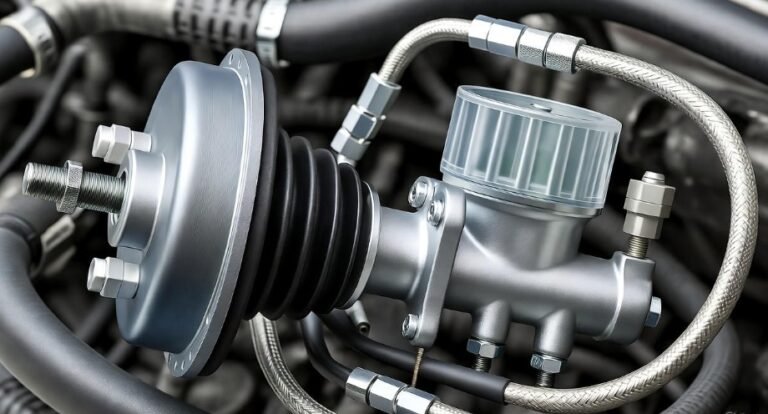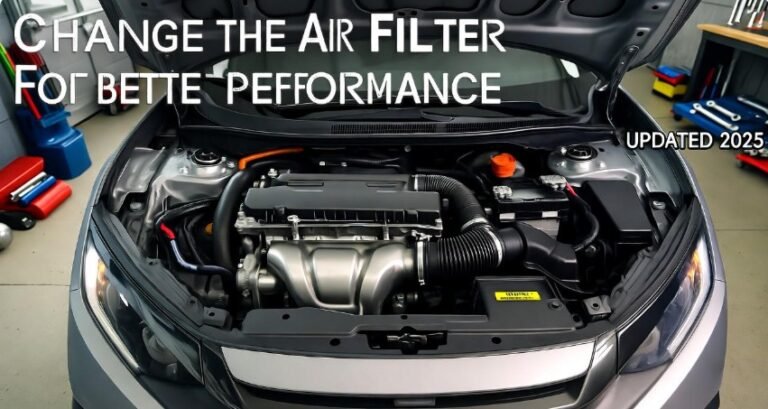Honda Activa 125 Disc Brake: The Ultimate Guide
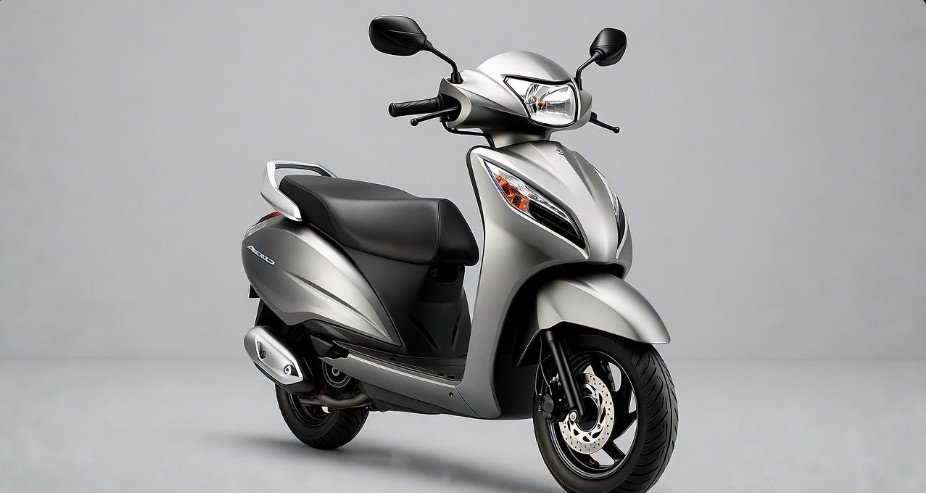
The Honda Activa 125 disc brake offers superior stopping power and enhanced safety for your rides. This guide provides everything you need to know about its features, maintenance, and benefits, making it an essential read for all Activa 125 owners.
Key Takeaways
- Understand the advantages of Honda Activa 125 disc brakes.
- Learn essential maintenance tips for optimal performance.
- Identify common issues and their simple solutions.
- Discover how to check and replace brake pads.
- Explore the benefits of disc brakes over drum brakes.
Navigating the world of scooter maintenance can feel daunting, especially when it comes to critical safety features like brakes. You might be wondering about the specifics of your Honda Activa 125 disc brake system. Is it really that much better than other types? How do you keep it in top shape? We understand that having clear, reliable information is key to keeping your ride smooth and safe. This guide is designed to demystify the Honda Activa 125 disc brake, offering straightforward advice for every owner.
We’ll break down exactly what makes the disc brake system on your Activa 125 special, explore why it’s a smart choice for your daily commute, and guide you through simple maintenance steps that ensure it performs at its best. Get ready to gain confidence in understanding and caring for your scooter’s most vital safety component. Let’s dive into the ultimate guide to your Honda Activa 125 disc brake.
Why Choose Honda Activa 125 Disc Brakes?
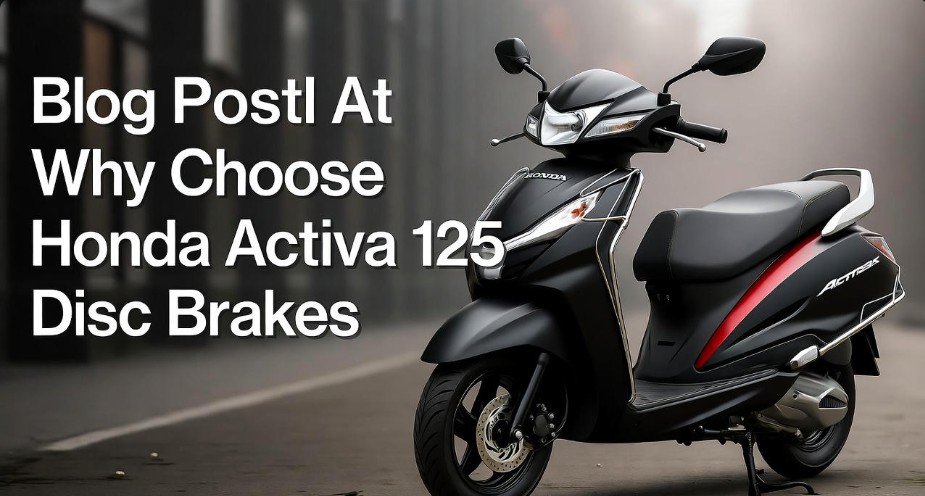
When you’re considering a scooter, braking performance is at the top of the list for safety and confidence. The Honda Activa 125, particularly with its disc brake option, stands out. But what exactly makes a disc brake system superior for a scooter like the Activa 125? It all comes down to better heat dissipation, consistent performance, and a more direct feel when you apply the brakes.
Unlike drum brakes, which can heat up significantly during prolonged braking and lose effectiveness (a phenomenon known as brake fade), disc brakes have an open design. This openness allows air to circulate around the rotor, cooling it down more efficiently. This means your Activa 125’s disc brake will likely provide more reliable stopping power, even after repeated braking on downhill stretches or in stop-and-go traffic. For riders in the USA, where varied terrains and traffic conditions are common, this enhanced reliability is a major advantage.
The braking mechanism itself involves a caliper that squeezes brake pads against a spinning rotor (the disc). This direct contact creates a strong friction force, translating into quicker and more controlled stops. This precise control is invaluable for maneuvering through busy streets or reacting to unexpected situations on the road. It’s these inherent design advantages that make the Honda Activa 125 disc brake a sought-after feature for discerning riders.
Understanding Your Honda Activa 125 Disc Brake System
The disc brake system on your Honda Activa 125 is a marvel of mechanical engineering designed for optimal stopping power. It’s composed of a few key components that work together seamlessly. Understanding these parts will help you appreciate its functionality and know what to look for during maintenance.
The central element is the Brake Disc (Rotor). This is a metallic plate, usually made of steel, that is attached to the wheel hub and rotates with the wheel. Its surface is designed to provide a friction point. On the Activa 125, this is typically a wave-style disc, which helps in better heat dispersal and cleaning of the rotor surface.
Next, we have the Brake Caliper. This is the component that houses the brake pads and is mounted onto the suspension fork, positioned over the brake disc. When you pull the brake lever, hydraulic fluid is pushed from the master cylinder, through the brake line, to the caliper. Inside the caliper, one or more pistons are activated by this hydraulic pressure.
The Brake Pads are friction materials mounted within the caliper. When the pistons in the caliper are activated, they force the brake pads to press against the rotating brake disc. The friction generated between the pads and the disc slows down and eventually stops the wheel. The Activa 125 disc brake pads are specifically engineered for the scooter’s weight and intended use.
Finally, the Brake Lever and Master Cylinder are what you interact with directly. The lever, located on your handlebar, is connected to the master cylinder. When you squeeze the lever, it pushes a piston in the master cylinder, which in turn pressurizes the brake fluid. This pressurized fluid travels through the Brake Lines (Hoses) to the caliper. The quality of these components, from the lever feel to the integrity of the fluid and lines, directly impacts your braking experience.
Disc Brake vs. Drum Brake on the Activa 125
It’s common for scooters to offer either disc or drum brakes, and the Honda Activa 125 is no exception. While both systems are designed to stop your vehicle, they operate differently and offer distinct advantages. For the Activa 125, the disc brake generally provides a more advanced braking experience.
Here’s a quick comparison:
| Feature | Honda Activa 125 Disc Brake | Honda Activa 125 Drum Brake (if applicable on certain variants) |
|---|---|---|
| Stopping Power | Generally superior, offering quicker and more consistent braking. | Adequate for normal conditions, but can fade under heavy use. |
| Heat Dissipation | Excellent due to open design, less prone to brake fade. | Poor; enclosed design traps heat, leading to reduced effectiveness when hot. |
| Wet Weather Performance | Better water shedding due to exposed disc. | Can be compromised by water accumulation within the drum. |
| Maintenance | Requires occasional pad replacement and caliper checks. | Requires periodic adjustment and brake shoe replacement. |
| Feel and Feedback | More direct and responsive lever feel. | Can feel softer or less communicative. |
| Cost (Initial) | Typically slightly higher on variants that offer it. | Typically lower. |
| Complexity | More complex hydraulic system. | Simpler mechanical system. |
As you can see, the disc brake on the Honda Activa 125 is engineered for superior performance, especially in demanding situations. This makes it a valuable upgrade for safety and rider confidence. For those in diverse climates or who frequently encounter varying traffic conditions, the advantages are undeniable. Consider visiting a certified Honda service center for a detailed comparison tailored to your specific needs.
Essential Maintenance for Your Disc Brakes
Keeping your Honda Activa 125 disc brake in prime condition is crucial for your safety. Regular maintenance ensures consistent performance and helps prevent potential issues. Fortunately, looking after your disc brakes is quite straightforward, even for beginners. It primarily involves regular checks and timely replacements of wear-and-tear items.
The most critical maintenance task is checking the Brake Pads. Over time, the friction material on the pads wears down. You’ll typically need to check these every few thousand miles, or if you notice a significant change in your braking performance or hear unusual noises. Most manufacturers, including Honda, recommend checking the pad thickness and the rotor surface for any damage or glazing.
Another vital aspect is the Brake Fluid. The hydraulic system relies on brake fluid to transmit the force from your lever to the caliper. Over time, brake fluid can absorb moisture, which lowers its boiling point and can lead to corrosion within the system. It’s recommended to have the brake fluid checked and flushed according to your owner’s manual – usually every two years or a specific mileage interval. Using the correct type of brake fluid (e.g., DOT 3 or DOT 4, as specified by Honda) is essential.
The Brake Disc (Rotor) itself should also be inspected. Look for deep grooves, scoring, or discoloration (which can indicate overheating). A warped rotor can cause pulsing in the brake lever. While rotors are more durable than pads, they do have a lifespan and may need replacement if significantly worn or damaged. You can often check for rotor runout using a dial indicator if you have the tools, but a visual inspection is a good start for basic checks.
Finally, ensure the Brake Lines (Hoses) are in good condition. Check for any signs of cracking, chafing, or leaks. Damaged brake lines can lead to a loss of braking power and are a serious safety hazard. If you suspect any issues with your brake lines, they should be replaced immediately by a qualified mechanic.
How to Check Honda Activa 125 Disc Brake Pad Wear
Checking your brake pad wear is one of the most important DIY maintenance tasks for your Honda Activa 125 disc brake. It’s a relatively simple process that can prevent costly damage to your brake rotor and ensure your scooter stops effectively.
Tools You Might Need:
- Flashlight
- Gloves (optional)
- A clean rag
- A flathead screwdriver (sometimes helpful for gently prying)
Step-by-Step Guide:
- Locate the Front Brake Caliper: With your scooter parked on a level surface and turned off, find the front brake caliper. It’s the assembly attached to the front suspension that clamps onto the shiny metal disc (the rotor) mounted on the wheel.
- Inspect the Pads: Look through the openings in the caliper. You should be able to see the brake pads pressing against the disc. You might need a flashlight to get a clear view, especially if it’s dark or the wheel is dirty.
- Assess the Thickness: Focus on the part of the pad that makes contact with the disc. There’s a metal backing plate, and then the friction material. Manufacturers generally recommend replacing pads when the friction material reaches about 2-3 millimeters (roughly 1/8 inch) in thickness, or about the thickness of two to three credit cards stacked together. If the material looks very thin, it’s time for a change.
- Check for Uneven Wear: Ensure both pads in the caliper appear to be wearing evenly. Uneven wear could indicate a sticking caliper piston, which needs professional attention.
- Look for Damage: While you’re there, quickly inspect the pads and rotor for any obvious damage, such as cracks or embedded debris.
If you’re unsure about what you’re seeing or if you notice abnormalities, it’s always best to consult your owner’s manual or a professional mechanic. Many owners find that performing this check at every oil change or every few thousand miles is a good routine. For more detailed technical specifications and procedures, refer to the official Honda Motorcycle Service Manual (though specific US manuals may vary in availability online).
Replacing Honda Activa 125 Disc Brake Pads
When your brake pads reach their wear limit, replacing them is a straightforward process that can significantly improve your scooter’s braking performance and safety. While it’s always recommended to consult your owner’s manual for exact specifications and procedures for your model year, here’s a general guide.
When to Replace:
- When pad material is worn down to 2-3 mm.
- If you hear consistent grinding noises when braking.
- If braking performance feels significantly reduced.
Tools You Will Need:
- New Honda Activa 125 compatible brake pads
- Wrench set (to remove caliper bolts)
- Torque wrench (recommended for proper tightening)
- Pliers or a C-clamp (to compress the caliper piston)
- Brake cleaner
- Gloves and eye protection
- Owner’s manual
Replacement Steps:
- Safety First: Park your scooter on a level surface. Engage the side stand or center stand. Wear gloves and eye protection.
- Access the Caliper: Locate the front brake caliper. You’ll likely need to remove a bolt or two that hold the caliper to the mounting bracket. Sometimes, you might need to remove the wheel for better access, depending on your model’s specific design. Consult your manual.
- Remove the Caliper: Carefully unbolt the caliper assembly. You don’t necessarily need to disconnect the brake line, but you might need to let it hang carefully using a wire or string to avoid stressing the hose.
- Remove Old Pads: Inside the caliper, you’ll see the brake pads held in place by pins or clips. Remove these retaining pins/clips and slide out the old brake pads. Note their orientation.
- Compress the Caliper Piston: Before fitting new, thicker pads, you need to push the caliper piston back into its bore. Use pliers or a C-clamp to gently and slowly compress the piston until it is fully retracted. Be careful not to damage the piston or the dust seal. You might need to open the brake fluid reservoir cap on your handlebar to allow fluid to return.
- Clean the Caliper: While the caliper is apart, use a brake cleaner and a rag to clean any dust and debris from the caliper body and piston area.
- Install New Pads: Insert the new brake pads into the caliper. Ensure they are seated correctly and in the same orientation as the old ones. Reinstall any retaining pins or clips.
- Reinstall the Caliper: Position the caliper back over the brake disc and secure it with the bolts you removed earlier. Tighten them to the manufacturer’s specified torque using a torque wrench. This is crucial for safety.
- Test Brakes: Before riding, pump the brake lever several times until it feels firm. This ensures the caliper piston has extended properly against the new pads.
- Bed-In New Pads: After replacement, the new pads need to “bed in” with the rotor. Ride gently for the first 50-100 miles, avoiding hard braking. Repeated moderate braking (applying brakes firmly but not locking up) from moderate speeds helps the pad material transfer evenly to the rotor surface, optimizing performance.
If you’re uncomfortable performing this procedure, it’s best to take your scooter to a qualified mechanic. For official torque specifications and detailed diagrams, the Honda service manual for your specific model is the best resource. You can often find links or purchase these manuals through Honda’s official channels or specialized automotive book retailers.
Troubleshooting Common Honda Activa 125 Disc Brake Issues
Even with regular maintenance, you might occasionally encounter issues with your Honda Activa 125 disc brake. Knowing how to identify and address common problems can save you time and money, and more importantly, keep you safe.
Squealing or Grinding Noises
Problem: You hear a high-pitched squeal or a harsh grinding sound when applying the brakes.
Possible Causes:
- Worn brake pads: This is the most common cause. Many pads have a wear indicator that starts to squeal when the pad material is low.
- Glazed brake pads/rotor: Overheating can cause the surface of the pads and rotor to become smooth and hardened, leading to noise and reduced friction.
- Debris: Small stones or road grit trapped between the pad and rotor can cause grinding.
- Moisture: Squealing can sometimes occur on damp mornings after the scooter has been parked overnight.
Solutions:
- Check brake pad thickness. If worn, replace them.
- If glazing or debris is suspected, the pads and rotor can be cleaned. Sometimes, light sanding of the pads (follow manufacturer guidelines) and cleaning the rotor with brake cleaner can help. If glazing is severe, replacing the pads might be necessary.
- Inspect for and remove any trapped debris.
- Squealing due to moisture usually subsides after a few brake applications.
Spongy or Soft Brake Lever
Problem: The brake lever feels soft or “spongy” and requires more travel to engage the brakes.
Possible Causes:
- Air in the brake lines: This is the most likely culprit. Air is compressible, unlike brake fluid, leading to a soft feel.
- Low brake fluid level: While not directly causing sponginess, it can exacerbate air issues and indicate a leak.
- Worn brake hose: An old or damaged hose can expand under pressure.
Solutions:
- Bleed the brake system: This process removes air from the hydraulic lines. It involves opening a bleed screw on the caliper and pumping the brake lever while carefully topping up the brake fluid reservoir. This is a critical safety procedure and should be done correctly, or by a professional.
- Check the brake fluid level in the reservoir and top up if necessary with the correct type of fluid. Inspect for leaks.
- Inspect the brake hoses for wear or damage. Replace if compromised.
Brake Fade (Reduced Stopping Power When Hot)
Problem: Your brakes feel weaker after prolonged use, such as descending a long hill.
Possible Causes:
- Overheated brake fluid: The moisture absorbed by the fluid raises its boiling point. Under heavy use, the fluid can boil, creating vapor pockets that are compressible.
- Worn brake pads or rotor: Reduced friction material means less stopping power.
- Glazed components: As mentioned earlier, glazing reduces effectiveness.
Solutions:
- Flush and replace the brake fluid. This ensures a fresh fluid with a high boiling point.
- Inspect and replace worn brake pads or rotors.
- Address glazing as described above.
Pro Tip: If you ever experience brake fade, downshift (if your scooter had gears) or ease off the throttle and allow the brakes to cool down by avoiding further heavy use. Seek professional inspection and maintenance if this occurs regularly.
If you are unsure about diagnosing or fixing any of these issues, always consult a certified Honda technician. Your safety on the road depends on well-maintained brakes.
Enhancing Your Braking Experience: Performance Upgrades
While the standard Honda Activa 125 disc brake system is excellent for daily commuting, some riders might be interested in enhancing their braking performance even further. These upgrades can offer a sharper feel, improved stopping power, or simply a more personalized look.
High-Performance Brake Pads
Several aftermarket manufacturers offer performance brake pads that can provide a more aggressive bite and better heat resistance than standard pads. When choosing, look for pads made from materials like sintered metal or advanced organic compounds. Sintered pads generally offer superior stopping power and longevity, especially in demanding conditions, but can sometimes be noisier or more abrasive on the rotor. Always ensure the pads are compatible with your Honda Activa 125’s specific caliper and rotor size. You can find reputable brands at specialist scooter parts dealers.
Braided Steel Brake Lines
Standard brake lines on many scooters are made of rubber. While perfectly adequate for normal use, rubber hoses can expand slightly under high hydraulic pressure, leading to a less direct or “spongy” feel at the lever. Braided steel brake lines, also known as stainless steel brake lines, are reinforced with a layer of braided steel. This reinforcement significantly reduces hose expansion, providing a firmer, more consistent lever feel and improved feedback. This can translate to more precise braking, especially during spirited riding or emergency stops. When purchasing, confirm they are designed for the Activa 125 to ensure proper fitment and length.
Performance Brake Rotors
While less common for typical scooter use, upgraded brake rotors can offer benefits. Wave-style rotors, like those sometimes found on the Activa 125, are already a step up from basic solid discs. Further upgrades might involve rotors made from higher-grade materials or with different patterns designed for even better heat dissipation and debris clearing. However, for most Activa 125 riders, the stock rotor, when maintained well, is more than sufficient. If you do opt for an aftermarket rotor, ensure it’s compatible with your existing caliper and brake pads, and always follow recommended installation procedures, including proper torque settings.
Brake Fluid Upgrade
As mentioned in maintenance, using the correct DOT specification fluid is vital. However, for those seeking the absolute best, high-performance DOT 4 or even DOT 5.1 brake fluids offer higher boiling points. This is particularly beneficial for riders who frequently experience heavy braking or operate in very hot climates, as it further reduces the risk of brake fade due to fluid boiling. Remember, never mix different types of brake fluid, and always bleed the system thoroughly when changing fluid types. Consult your owner’s manual for the recommended DOT specification before considering an upgrade.
When considering any performance upgrade, it’s crucial to balance the benefits with cost and intended use. For the everyday rider, excellent maintenance of the stock Honda Activa 125 disc brake system will provide the most reliable and cost-effective performance. Upgrades are best suited for those who find themselves pushing the limits of their scooter or desire a more refined feel.
Frequently Asked Questions (FAQ)
Q1: How often should I check my Honda Activa 125 disc brake pads?
A1: It’s recommended to check your brake pads every few thousand miles, or at least every six months. If you ride frequently in stop-and-go traffic or hilly areas, checking more often is advisable.
Q2: What is the recommended brake fluid for the Honda Activa 125 disc brake?
A2: Your Honda Activa 125 likely requires DOT 3 or DOT 4 brake fluid. Always refer to your owner’s manual for the exact specification for your model year. Using the incorrect fluid could damage the braking system.
Q3: My Honda Activa 125 disc brake feels soft. What should I do?
A3: A soft brake lever usually indicates air in the brake lines. The system needs to be bled by a qualified mechanic or, if you have the knowledge and tools, you can perform this yourself following the service manual procedures. Check the brake fluid level first, as low fluid can mimic this symptom.
Q4: Can I use a regular car brake cleaner on my scooter’s disc brake?
A4: Yes, most automotive brake cleaners are safe to use on scooter disc brakes. They are designed to remove brake dust, oil, and grease without damaging brake components. Ensure good ventilation when using.
Q5: How do I know when my Honda Activa 125 disc brake rotor needs replacement?
A5: A brake rotor typically needs replacement if it’s warped (causing pulsation when braking), has deep grooves or scoring that cannot be buffed out, or if its thickness has worn below the manufacturer’s minimum specification. Visual inspection and a mechanic’s assessment are key.
Q6: Is the disc brake on the Activa 125 the same for both front and rear?
A6: The Honda Activa 125 typically features a disc brake on the front wheel. The rear brake is often a drum brake. While the principle is the same, the specific parts and maintenance procedures will differ between the front disc and rear drum brakes.
Conclusion
Understanding and properly maintaining your Honda Activa 125 disc brake is fundamental to safe and enjoyable riding. We’ve covered the advantages of this system, delved into its components, and provided step-by-step guidance on essential maintenance like checking pad wear and replacement. Troubleshooting common issues such as squealing or a soft brake lever has also been detailed, empowering you with knowledge to address minor concerns promptly.
Remember, your scooter’s brakes are its most critical safety feature. Regular checks, timely servicing, and using the correct parts and fluids, as outlined in your owner’s manual and this guide, will ensure your Activa 125 performs reliably for years to come. If you ever feel unsure about a maintenance task, don’t hesitate to seek assistance from a certified Honda technician. Ride smart, ride safe!




